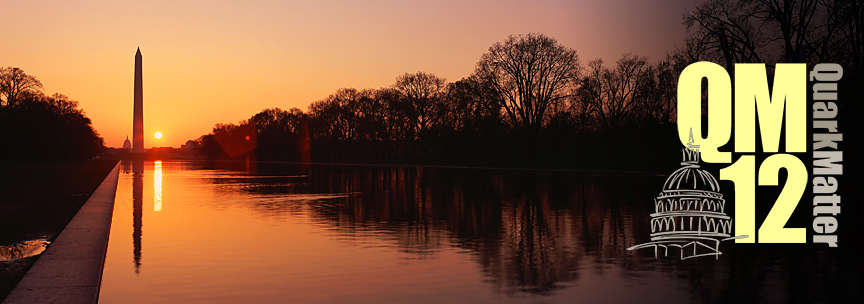Derek Teaney
(Stony Brook University)
16/08/2012, 14:00
Oral Presentation
We determine the photon production rate at next to leading order, i.e. through order $g^2 m_D/T$. At leading order, photon production is determined by three processes: hard two-to-two collisions, collinear bremsstrahlung, and quark-conversions, i.e. a process where the incoming quark transfers almost all of its momentum to the produced photon and the final state quark is soft. At NLO, wider...
Mindaugas Lekaveckas
(MIT)
16/08/2012, 14:20
Oral Presentation
We calculate P(k_perp), the probability distribution for an energetic parton propagating for a distance L through a medium to pick up transverse momentum k_perp, for a medium consisting of weakly coupled quark-gluon plasma. We use full or HTL self-energies in appropriate regimes, resumming each in order to find the leading large-L behavior. We estimate the jet quenching parameter and compare...
Dr
Christian Schmidt
(Universitaet Bielefeld)
16/08/2012, 14:40
Oral Presentation
We calculate electric and baryonic charge fluctuations on the lattice. Results have been obtained with the highly improved staggered quark action (HISQ) and almost physical quark masses on lattices with temporal extent of N_tau=6,8,12. Higher cumulants of the net-charge distributions are increasingly dominated by a universal scaling behavior, which is arising due to a critical point of QCD in...
Dr
Claudia Ratti
(Torino University)
16/08/2012, 15:00
QCD at finite temperature and density
Oral Presentation
We present our estimate for the charm quark's contribution to
the equation of state and to the fluctuations of conserved charges.
Our results are based on simulations with dynamical charm at
physical quark masses. We also address the question, to what extent
staggered simulations are reliable. We give comparisons with the Wilson
formulation as well as with results using dynamical overlap fermions.
Swagato Mukherjee
(Brookhaven National Laboratory)
16/08/2012, 15:20
Oral Presentation
Traditionally the freeze-out conditions in the heavy-ion collision experiments are obtained by comparing the experimentally measured hadron yields with that from the statistical hadron resonance gas model. In this talk we will present how the freeze-out chemical potentials and the freeze-out temperature can be obtained in a model independent way from ab-initio lattice QCD calculations by...
Alexei Bazavov
(B)
16/08/2012, 15:40
Oral Presentation
The physics of the Quark-Gluon Plasma (QGP), currently explored experimentally in heavy-ion collisions, is non-perturbative for temperatures below approximately 1 GeV. One of the fundamental properties of the QGP, the Equation of State, is a subject of extensive studies in lattice QCD. The lattice QCD Equation of State is now an essential requirement for the correct hydrodynamic modeling of...




